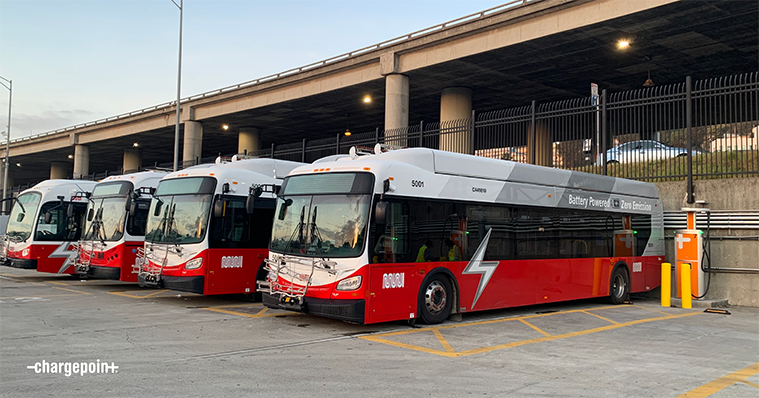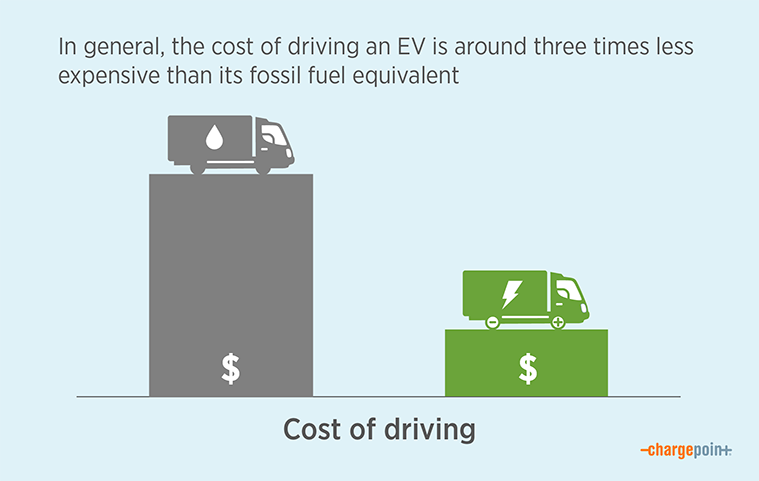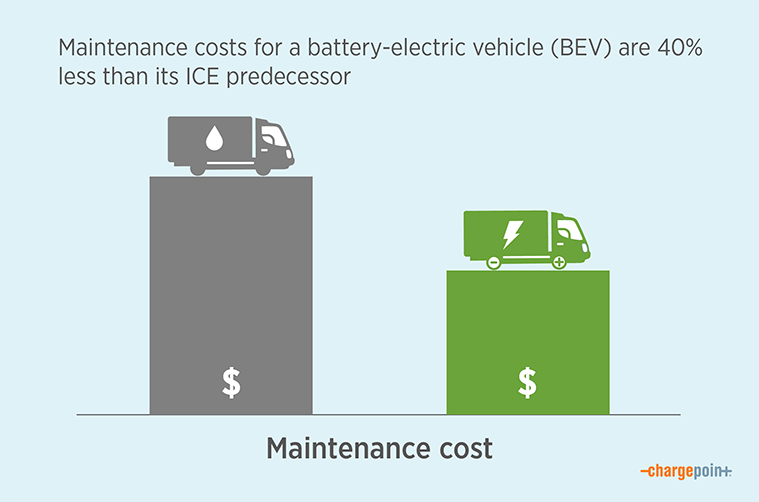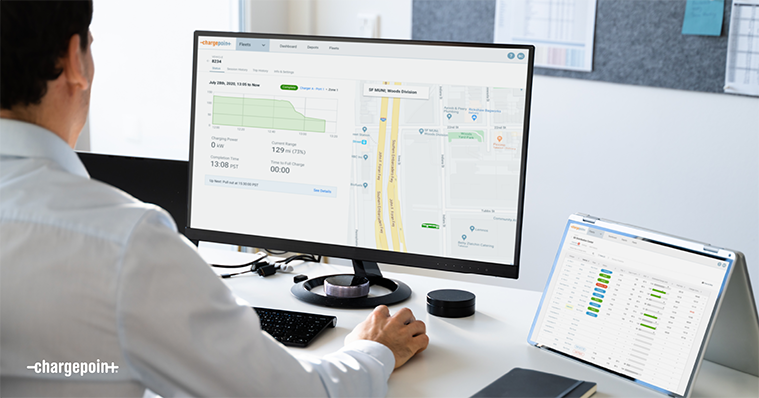
Over the past few years, there has been a significant increase in the adoption of electric vehicles (EVs) worldwide — and bus fleets are no exception. Global sales of commercial EVs have more than doubled year over year, and market analyst BloombergNEF projects that by 2040, up to 75% of light-duty fleet vehicle sales and nearly 55% of medium- and heavy-duty fleet sales will be electric.
Despite the initial high purchase price of large EVs such as electric buses (eBuses), many operators are beginning to realize that an electric fleet’s total cost of ownership (TCO) is significantly lower than a comparable diesel fleet. Contrary to outdated beliefs, diesel fleets are simply not cheaper in the long run. The case for fleet electrification has never been more apparent.
That being said, let's examine one of the main advantages of electric fleets — cost efficiency.

Electricity is cheaper than diesel fuel
At around $0.14 per kilowatt-hour (kWh), the cost of electricity is typically lower than that of fossil fuels on a per-mile basis. To sweeten the deal even further, EVs are generally more energy-efficient than internal combustion engine (ICE) vehicles, meaning they can travel more miles per unit of energy consumed. Additionally, EV fleet operators may have access to off-peak electricity rates, further lowering their charging costs. In general, driving an EV is around a third of the cost of its fossil fuel equivalent.
Despite the more recent increases in energy rates, the cost of electricity is generally more predictable and stable over time. By contrast, oil prices are influenced by various factors such as geopolitical events, supply and demand dynamics and market speculation, leading to unpredictable and fluctuating fuel prices. Additionally, the availability of renewable energy sources, such as solar or wind power, can provide further cost advantages by reducing or even eliminating the need to purchase electricity from the grid. This combination of stable electricity prices and the potential for renewable energy integration contributes to the significant cost savings achieved through charging, making it an economically attractive option for transit agencies.

Going electric means reduced maintenance costs
Due to the simpler and more reliable nature of EVs compared to traditional ICE vehicles, going electric reduces maintenance costs. EVs have only around 20 moving parts compared to nearly 2,000 for a traditional vehicle. That eliminates the need for regular maintenance tasks associated with ICE components, such as oil changes, transmission repairs and exhaust system maintenance. Additionally, EVs have regenerative braking systems that reduce wear on brakes and increase their lifespan. With fewer components prone to mechanical failure, EVs generally require less frequent servicing, reducing maintenance costs. In fact, maintenance costs for a battery-electric vehicle (BEV) are 40% less than its ICE predecessor.
Incentives make going electric more affordable than you think
Europe and North America are booming with national and regional funds and incentives for e-mobility. With ambitious carbon-neutrality goals in both geographies, this trend is only expected to grow. To help transit agencies offset the higher upfront costs of electric vehicles, many governments offer financial incentives in the form of direct subsidies, grants or rebates that help to reduce the purchase price.
Tax incentives are also commonly provided to fleet operators transitioning to EVs. These can include tax credits or deductions based on purchase price or leasing cost. This support can also extend to charging infrastructure, making it more feasible for operators to advance their electrification plans in a scalable, future-proof way.
Tip: It's worth noting that government incentives and tax breaks are subject to change, so agencies and fleet owners should stay updated on the latest regulations and eligibility criteria to maximize their cost savings. Need a hand with that? Our experts are ready to help — check out our EV charging incentives page to keep updated on the most recent grants and incentives.
Resale value and depreciation rates
While eBuses don’t require oil changes, they do require a battery replacement once they dip to 80% capacity. The battery warranty fluctuates from manufacturer to manufacturer — some offer up to a 12-year warranty, while others are lower. However, batteries that need to be replaced are not useless — quite the contrary.
There are several ways in which a battery can be reused. It is possible to resell batteries to third parties, such as recyclers, to a secondary market or to sell the battery back to the manufacturer. Remember, while a battery that loses 20% of its initial capacity is deemed unusable for public transport, it still retains 80% of its healthy battery cells. There are also multiple in-house usages for these batteries, such as for tram and train substations, or in combination with eBus charging stations.

Advanced software helps optimize eBus efficiency and consumption
While robust charging stations are essential for a successful eBus fleet operation, software is the key to unlocking all benefits that going electric delivers. Networked charging software allows operators to remotely monitor and manage charging stations and sessions. This means you can control remotely when, for how long and how fast a vehicle charges — depending on your needs.
These software features also allow operators to avoid charging vehicles at peak times and exceeding your network operator’s maximum capacity, ultimately lowering energy costs. Charging speeds are optimally controlled so that the vehicles are always ready for operation but avoid exceeding the maximum grid capacity.
The verdict
When talking about the electrification of public transportation, skeptics like to focus on the initial high cost of an eBus compared to an internal combustion engine counterpart. However, as all operators know, what’s actually important when looking at cost-efficiency is the total cost of operation over the lifetime of the vehicle — and that’s what we’ve discussed above.
Of course, a short article can only highlight the main cost benefits of electric fleets. Are you curious what going electric would mean for your own public transit fleet? Good news — we’ve created a fleet operational expenses calculator to help you guide your decision.
Would you like to go more in-depth? Our EV experts are ready to help ... just drop them a message below.

